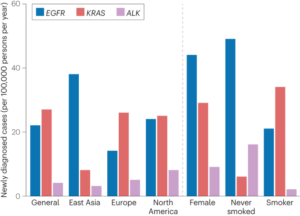Your cart is currently empty!
srisachidanand

Mon – Fri 10:00 AM – 09:00 PM / Sunday 11:00 AM – 07:00 PM

Defence Coloney, New Delhi, India

+919780827171

support@curemedicaltourism.com
In a world where awareness is key to combating life-threatening diseases, understanding the intricate details of lung cancer symptoms becomes paramount. With its staggering prevalence and profound impact on global health, lung cancer demands our attention and vigilance. Let’s delve into the nuances of its symptoms, from subtle warnings to glaring red flags, empowering readers to recognize potential signs and take proactive steps toward early detection and treatment.
Lung cancer stands as one of the most prevalent and deadliest forms of cancer worldwide. According to the World Health Organization (WHO), it accounts for nearly 2 million new cases annually, with over 1.7 million deaths attributed to the disease each year. This staggering toll not only affects individuals but also reverberates across families and communities, highlighting the urgent need for awareness and action.

Lung cancer symptoms vary widely, often manifesting differently based on the stage of the disease. In the early stages, symptoms may be subtle and easily overlooked, mimicking common respiratory ailments. These can include:
As the disease progresses, symptoms may intensify and become more pronounced, including:
The importance of early detection cannot be overstated in the battle against lung cancer. Recognizing symptoms promptly and seeking medical evaluation can significantly improve treatment outcomes and survival rates. Studies show that individuals diagnosed at an early stage have a higher likelihood of successful treatment and long-term survival compared to those diagnosed at advanced stages.
Empower yourself with knowledge and take proactive steps to safeguard your respiratory health. If you experience any persistent or concerning symptoms, don’t hesitate to consult a healthcare professional. Additionally, consider the following actionable steps:
In the fight against lung cancer, awareness and early detection are our strongest weapons. By understanding the diverse range of symptoms associated with the disease and taking proactive steps to monitor respiratory health, individuals can play a crucial role in their own well-being. Let’s unite in our efforts to foster awareness, promote early detection, and ultimately save lives in the battle against lung cancer.
References: